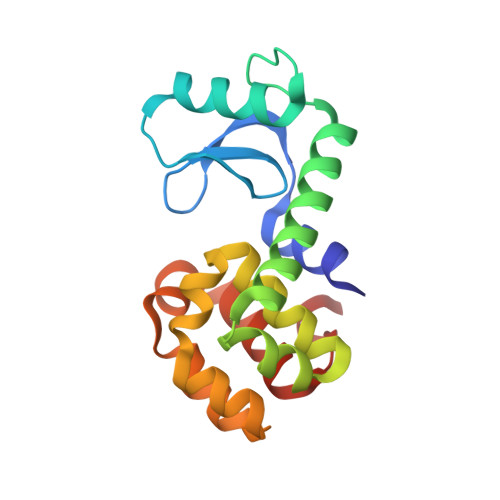Structural Rigidity of a Large Cavity-containing Protein Revealed by High-pressure Crystallography.
Collins, M.D., Quillin, M.L., Hummer, G., Matthews, B.W., Gruner, S.M.(2007) J Mol Biology 367: 752-763
- PubMed: 17292912
- DOI: https://doi.org/10.1016/j.jmb.2006.12.021
- Primary Citation of Related Structures:
2B6T, 2OE7, 2OE9, 2OEA - PubMed Abstract:
Steric constraints, charged interactions and many other forces important to protein structure and function can be explored by mutagenic experiments. Research of this kind has led to a wealth of knowledge about what stabilizes proteins in their folded states. To gain a more complete picture requires that we perturb these structures in a continuous manner, something mutagenesis cannot achieve. With high pressure crystallographic methods it is now possible to explore the detailed properties of proteins while continuously varying thermodynamic parameters. Here, we detail the structural response of the cavity-containing mutant L99A of T4 lysozyme, as well as its pseudo wild-type (WT*) counterpart, to hydrostatic pressure. Surprisingly, the cavity has almost no effect on the pressure response: virtually the same changes are observed in WT* as in L99A under pressure. The cavity is most rigid, while other regions deform substantially. This implies that while some residues may increase the thermodynamic stability of a protein, they may also be structurally irrelevant. As recently shown, the cavity fills with water at pressures above 100 MPa while retaining its overall size. The resultant picture of the protein is one in which conformationally fluctuating side groups provide a liquid-like environment, but which also contribute to the rigidity of the peptide backbone.
Organizational Affiliation:
Department of Physics, Cornell University, Ithaca, NY 14853, USA.




















